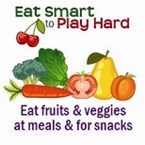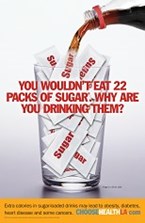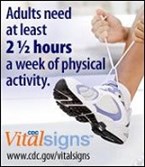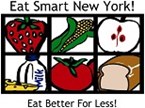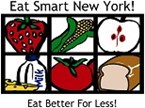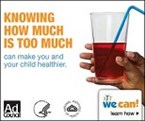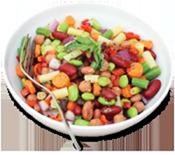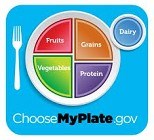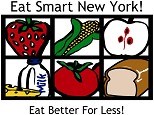Beans and peas are the mature forms of legumes. They include kidney beans, pinto beans, black beans, lima beans, black-eyed peas, garbanzo beans (chickpeas), split peas and lentils. They are available in dry, canned, and frozen forms. These foods are excellent sources of plant protein, and also provide other nutrients such as iron and zinc. They are similar to meats, poultry, and fish in their contribution of these nutrients. Therefore, they are considered part of the Protein Foods Group. Many people consider beans and peas as vegetarian alternatives for meat. However, they are also considered part of the Vegetable Group because they are excellent sources of dietary fiber and nutrients such as folate and potassium. These nutrients, which are often low in the diet of many Americans, are also found in other vegetables.
Because of their high nutrient content, consuming beans and peas is recommended for everyone, including people who also eat meat, poultry, and fish regularly. The USDA Food Patterns classify beans and peas as a subgroup of the Vegetable Group. The USDA Food Patterns also indicate that beans and peas may be counted as part of the Protein Foods Group. Individuals can count beans and peas as either a vegetable or a protein food.
Green peas, green lima beans, and green (string) beans are not considered to be part of the beans and peas subgroup. Green peas and green lima beans are similar to other starchy vegetables and are grouped with them. Green beans are grouped with other vegetables such as onions, lettuce, celery, and cabbage because their nutrient content is similar to those foods.
How to Count Beans and Peas in the USDA Food Patterns:
Generally, individuals who regularly eat meat, poultry, and fish would count beans and peas in the Vegetable Group. Vegetarians, vegans, and individuals who seldom eat meat, poultry, or fish would count some of the beans and peas they eat in the Protein Foods Group. Here's an example for both ways:
Count the number of ounce-equivalents of all meat, poultry, fish, eggs, nuts, and seeds eaten.
If the total is equal to or more than the suggested intake from the Protein Foods Group (which ranges from 2 ounce-equivalents at 1000 calories to 7 ounce-equivalents at 2800 calories and above) then count any beans or peas eaten as part of the beans and peas subgroup in the Vegetable Group.OR
If the total is less than the suggested intake from the Protein Foods Group, then count any beans and peas eaten toward the suggested intake level until it is reached. (One-fourth cup of cooked beans or peas counts as 1 ounce equivalent in the Protein Foods Group.) After the suggested intake level in the Protein Foods Group is reached, count any additional beans or peas eaten as part of the beans and peas subgroup in the Vegetable Group.




